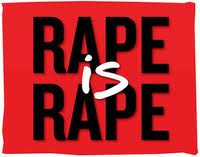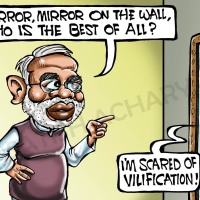 The main entrance of Lakhvad village, around 3-4 kilometres from Mehsana.
The main entrance of Lakhvad village, around 3-4 kilometres from Mehsana.A dalit woman sarpanch from Lakhvad village of Mehsana district, Kamla Makwana, her husband, their son and two others were arrested late Tuesday on the basis of a recent complaint of breach of trust and criminal intimidation lodged by former deputy sarpanch Ratilal Patel. They were later sent to Mehsana district jail after a local magisterial court rejected their bail petitions.She had reportedly filed multiple complaints of harassment against her predecessor from locally dominant Patel community, Prahlad Patel, and his then deputy, Ratilal Patel. Both Ratilal and Prahlad allegedly didn’t want to let Kamla function as the village Sarpanch.
Following the arrest, the jailed woman sarpanch now wants to resign after getting fed up of the harassment she has been subjected to by her predecessors, sources said.
Kamla was elected as the sarpanch of Lakhvad Gram Panchayat in January last year under the Gujarat government’s Samras Yojna where instead of electing, villagers are selecting the sarpanch and other members of the gram panchayat. However, she allegedly started facing harassment at the behest of Prahald who was the Sarpanch of the village before her.
She made a number of complaints to different authorities like the district development officer, state Human Rights Commission and local police. The complaints include evidence to prove that Prahlad had been misusing the old letterheads of the gram panchayat and issuing various certificates to the villagers while forging Kamla’s signature. She also lodged two complaints against Prahald and Ratilal under the provisions of the Scheduled Castes & Scheduled Tribes (Prevention of Atrocities) Act.
However, on April 3, Ratilal Patel, who was deputy sarpanch in the village when Prahald was sarpanch, lodged a criminal complaint against Kamla, her husband Kachra Makwana, son Bharat, and two friends — Bharat Patel and Ramila Patel — with Mehsana taluka police station.
According to the complaint, the Makwanas wanted to get loan of Rs 1.80 lakh from the Scheduled Caste Development Corporation to buy a rickshaw in 2004. And Ratilal — under the recommendation of Bharat Patel and Ramila Patel — had become a guarantor for the same on the basis of one of his land pieces. He alleges that the Makwanas assured him of paying regular instalments for the loan.
However, the Makwanas alleges Ratilal did not pay the instalments for the loan and in 2013 when he asked them to pay it so that the government dues on his land could be cleared, they allegedly threatened him and did not pay the amount. Ratilal has accused the Makwanas and Patels of breach of trust, criminal intimidation and abetment.
On Tuesday, Sub-Inspector of Mehsana taluka police station, D K Rathod, reportedly asked the five to get their statements recorded in the case and when they went to police, the five were arrested and produced before a magisterial court. Immediately, their advocate, Jayanti Parmar, moved bail petitions. However, Parmar said the petitions were rejected, following which they were sent to Mehsana district jail.
Kamla’s younger son, Manoj (22), and his wife Sonal, are now the only members of the family out. “This entire case has been fabricated to harass my mother as she did not agree to be a puppet in the hands of Prahlad Patel after being elected Sarpanch. The entire state machinery of Mehsana is working against us at the behest of Prahlad who openly boasts closeness to some top politicians in the Gujarat government,” Manoj said.
However, Ratilal denied the allegations and said, “I had mortgaged my land to the Scheduled Caste Development Corporation for this family to buy a rickshaw. They did not pay the instalments of the loan for nine years. And if they do not pay the instalment, it is possible that my land is auctioned by the state government. I asked them repeatedly to pay the amount and when they did not do so, I had to file the complaint.”
The investigation officer in the case, S I Rathod, said the police have acted completely on the merits of the case. Manoj met his mother in jail Wednesday. “She is very disturbed and has decided to resign from the post. She told me that it is better to live a peaceful life than to indulge in public life,” he said.
Related articles
- Can the Female Sarpanch Deliver ? #womenrights #reservation (kractivist.wordpress.com)
- Open letter to #FICCI on Narendra Modi hiding the Truth about Women in Gujarat #Vaw #Womenrights (kractivist.wordpress.com)
- In Narendra Modi’s Gujarat, no Narmada water for dalits #WTFnews (kractivist.wordpress.com)
- Haryana- Dalits flee Haryana village after upper caste attacks (kractivist.wordpress.com)
- #India- Forest Rights:Illusory Rights #tribalrights #indigenousrights (kractivist.wordpress.com)


 Strengthening primary healthcare facilities would cost one-third of what governments spend on health insurance (Courtesy: swasthindia.in)
Strengthening primary healthcare facilities would cost one-third of what governments spend on health insurance (Courtesy: swasthindia.in)









